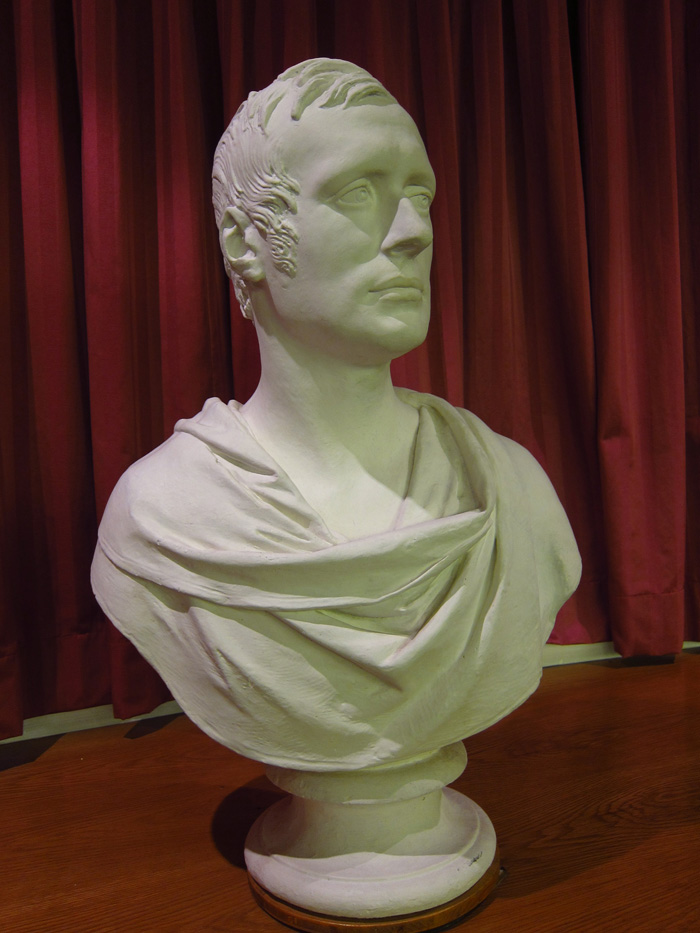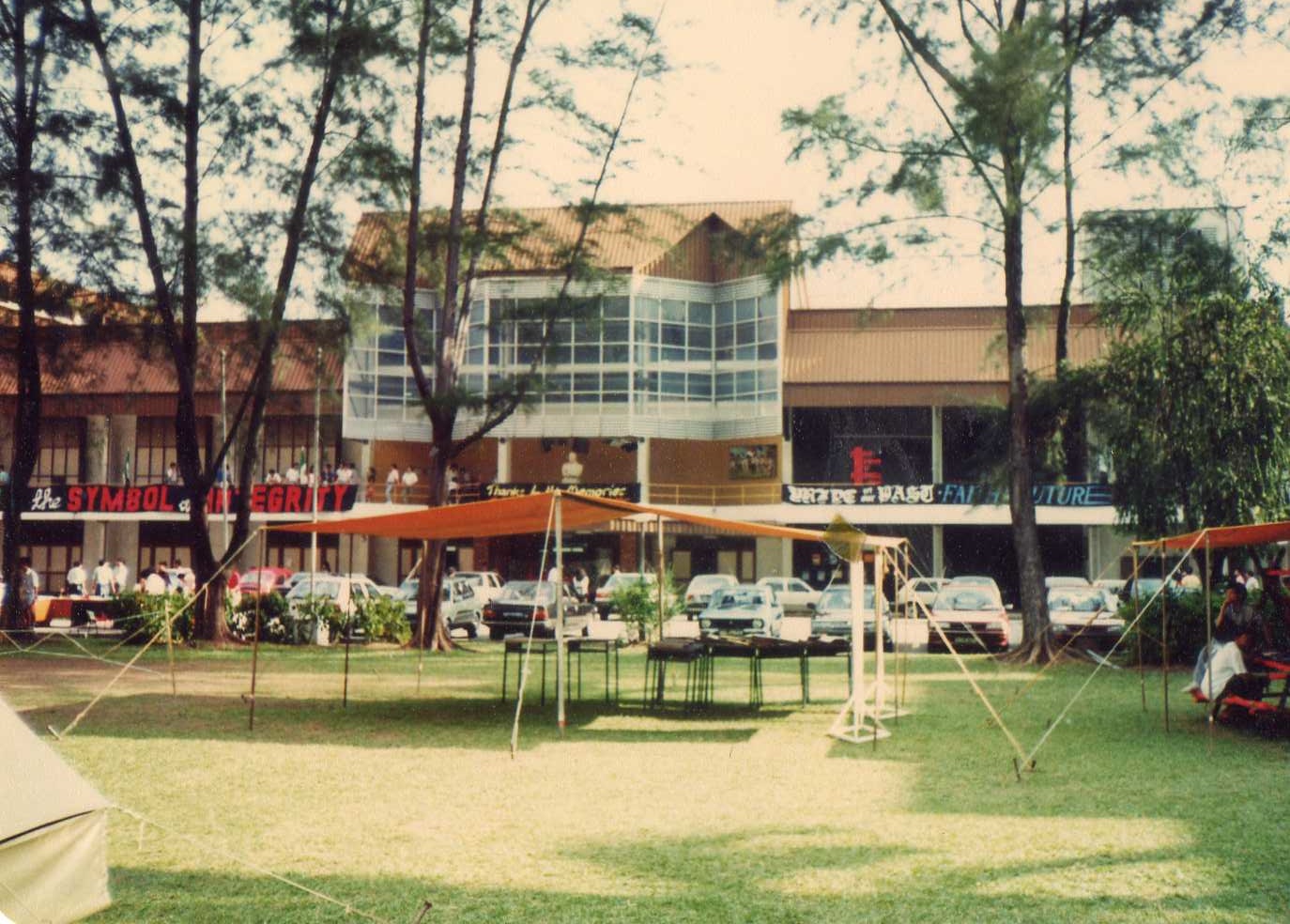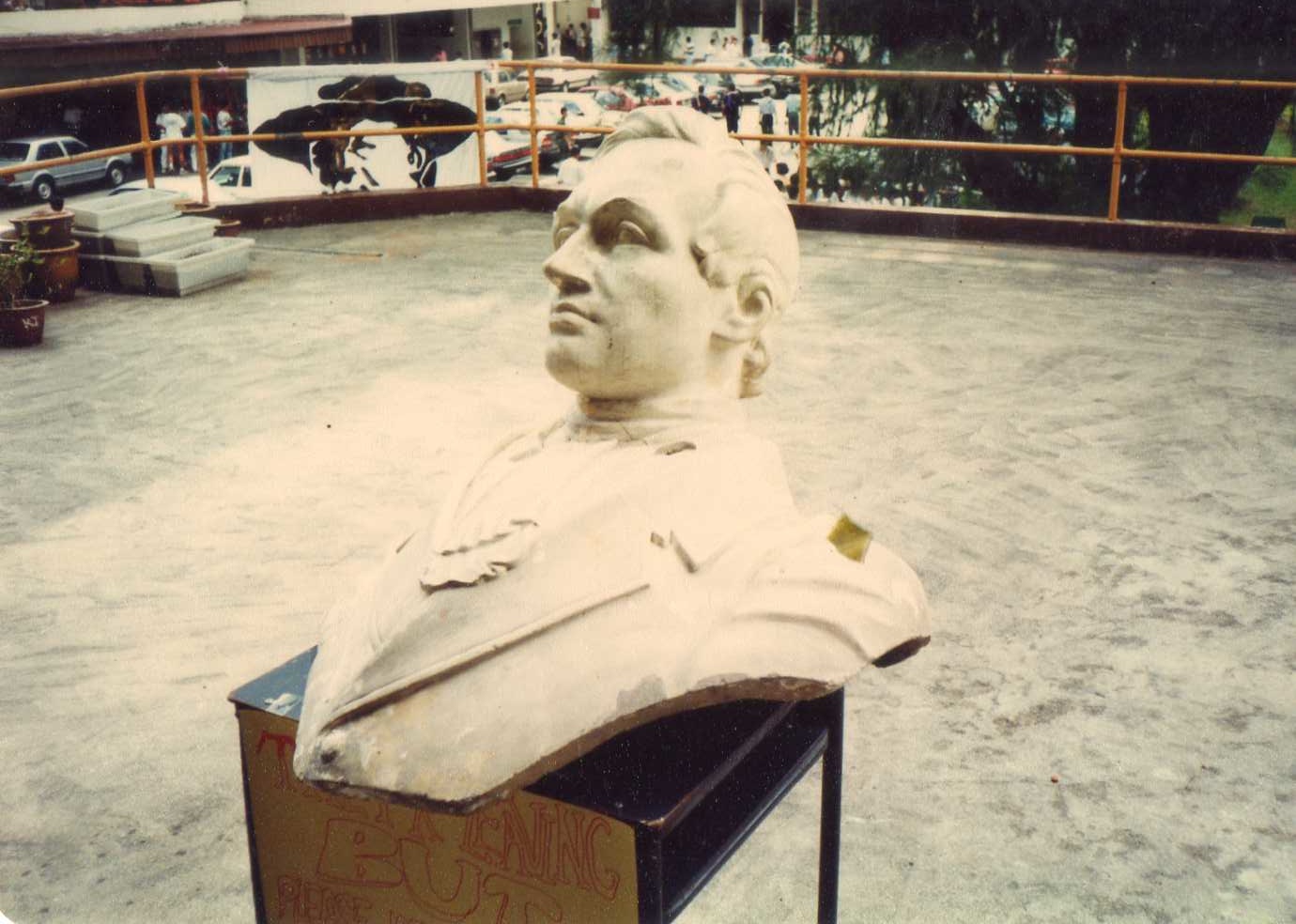All visitors to RI are familiar with the busts of Raffles found outside the Year 1–4 and 5–6 General Offices. Some might know of another, smaller bust that resides in the Board Room of the Year 1–4 General Office. But why do we have three of such sculptures, and where did they come from?
The story begins well before these three sculptures were made. The very first bust ever made for Sir Stamford Raffles was cast in 1817 by Sir Francis Legatt Chantrey, one of the most famous sculptors of his day. It was made of marble and cost Raffles £126. Unfortunately, it was lost when the ship bearing Raffles and his family from Sumatra to England was shipwrecked on 2 February 1824.
Thankfully, Chantrey had kept a plaster copy of the original bust and moulded two more models. One was presented to the Zoological Society of London in 1877 and the other belonged to Raffles’ wife, Lady Sophia. After Raffles’ death in 1826, she presented it to RI, then known as the Singapore Institution, in the 1830s.

The bust was intended to be displayed in the Institution’s library, but succeeding headmasters of the school deemed it too valuable to be put on public display. They kept it in their homes for safety and produced it only for annual speech and prize-giving days.
In 1846 the Chantrey plaster bust was removed to the Singapore Library; in 1849, it made its way to the Raffles Museum. It returned to RI in 1876 and was then kept in the headmaster’s study until October 1906, when the retiring headmaster Mr R W Hullett presented it to the Singapore Municipality. The bust remained in the Municipality Offices until the 1940s, when it was believed to have been lost during the war.
Well after the war, in the absence of the Chantrey bust, headmaster Mr Philip Liau commissioned a second bust of Raffles in 1972, this time a polymarble model sculptured by Victor and Mendez. It sat at the upper balcony of the hall in the Grange Road campus, facing the parade square. That same year, the Chantrey bust miraculously resurfaced in the Singapore Trade Office in London – where it had apparently been mouldering in the cellar since 1957.
After the founding of RJC in 1982, the school was presented with a replica of the polymarble bust by the Class of 1982. When RI and RJC moved to Bishan in 1990 and 2005 respectively, their polymarble busts were placed in prominent spots in the school. The Chantrey bust also received a new lease of life: in 1994 it was returned to RI by Mr Michael Stewart, a distant nephew of Raffles. Having journeyed around the world, it now takes pride of place inside the Board Room.
***
Alumni Write-In
The above article was first published in Eagle Eye (Issue 6, Page 28). We were delighted to receive an email from an alumnus, Wang Heh (RI 1987 & RJC 1989) who informed us that there is a 4th bust somewhere out there! Read on to find out more about the mysterious 4th bust.
There should have been 4 busts in RI's custody, instead of 3.
Two photos taken in 1990 at the Grange Road campus (before the move to Bishan) show that RI already had 2 busts back then. The one in the first photo (Bust #1) should be the one outside the Year 1-4 General Office today, while the one in the second photo (Bust #2) is not mentioned in the article. Bust #3 would still be at RJC back then (and should be the one outside Year 5-6 General Office today), while Bust #4 only returned in1994.


So the question is, where is Bust #2 today? Back in the Grange Road days, it was stored in a musty room located below the stage (those who had gone on "treasure hunts" at night during our ECA training camps would know!).
© Wang Heh (RI 1987 & RJC 1989)
© This article was originally published in the 06 issue of Eagle Eye, the RI Student Magazine. .